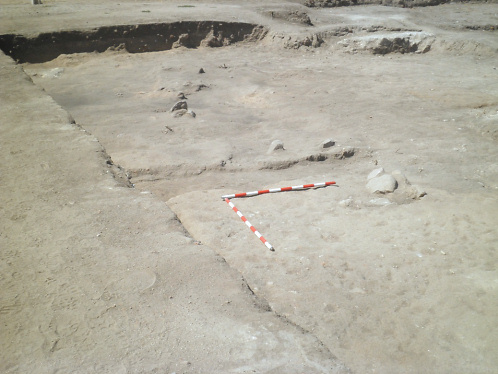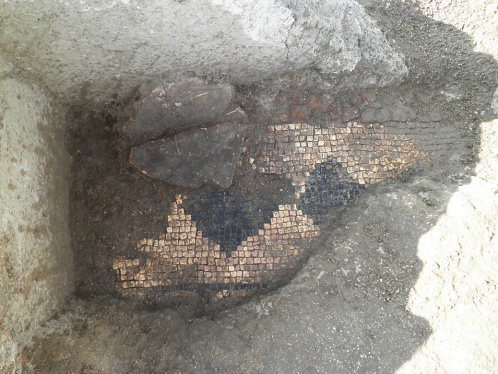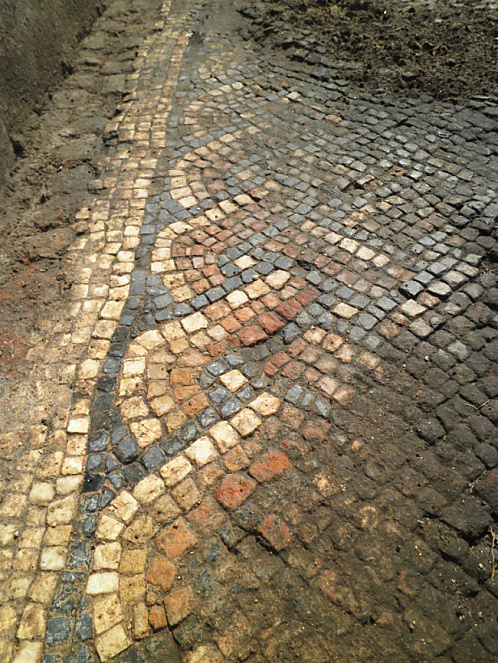We continue documenting the rooms that have a heating system. As a matter of archaeological strategy it was decided to enlarge the excavation area by of 100 m2 (1076 sq feet) during this campaign, since it is necessary to define the whole sector. Overall, it appears that there are three different areas (with the possibility of a forth one existing) where we still see the imprints of brick pilae through which warm air could circulate.
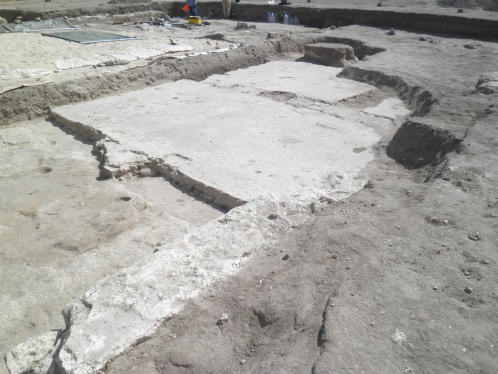
At the same time we proceed to complete the excavation of the heated zone (where we just need to determine if a space clogged with accumulations of ash corresponds with praefurnium), we continue with the cleaning of the already mentioned mosaic floor that has better preserved parts than others, due to the intrusion of medieval burials. The mosaic pavement has a compositional pattern already observed in the previous season: floral octagons arranged around the emblem.
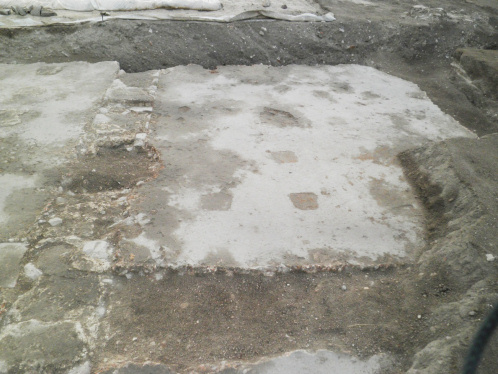
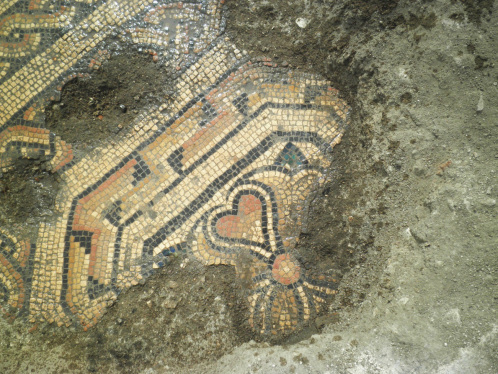
Translated by Lara M. Moreda
Edited by Andrew B. Greeves
Edited by Andrew B. Greeves



